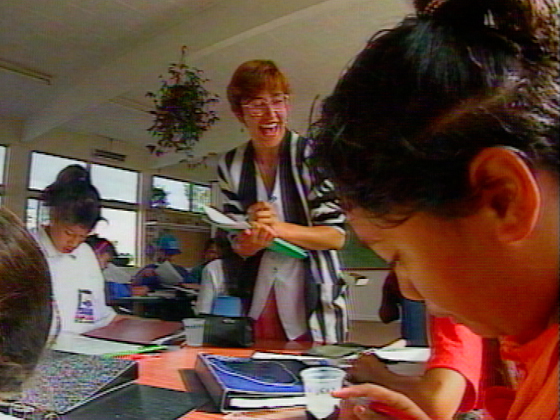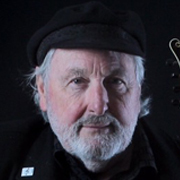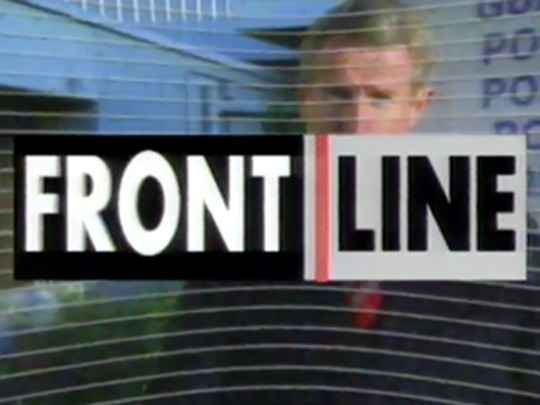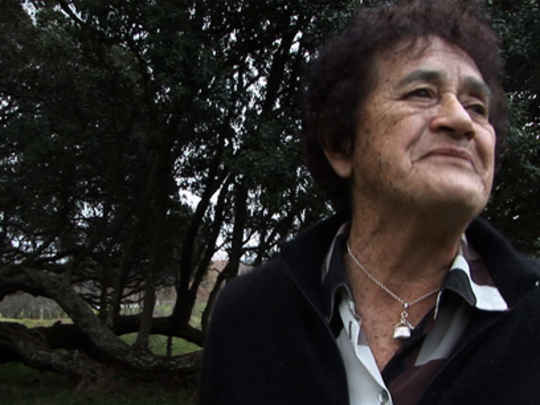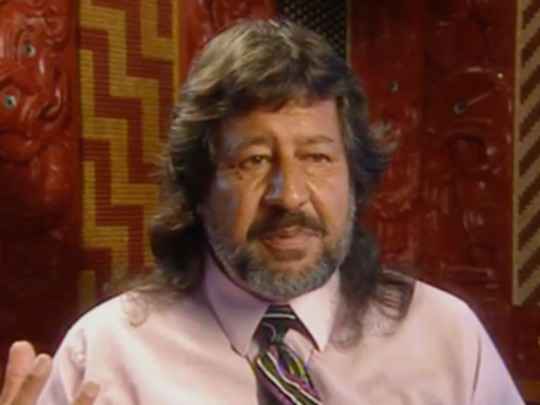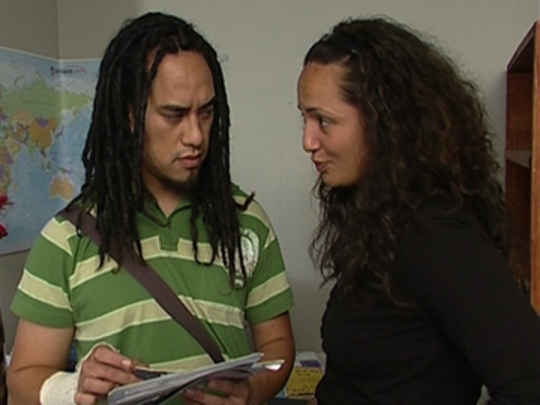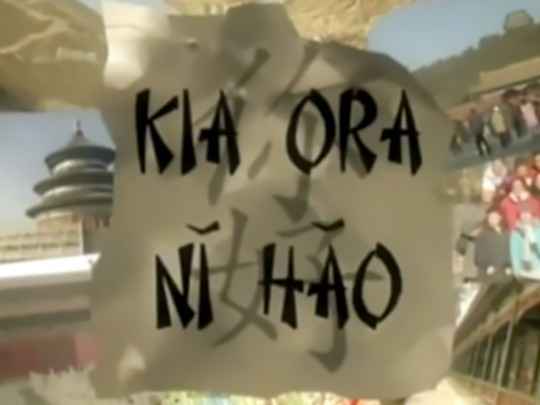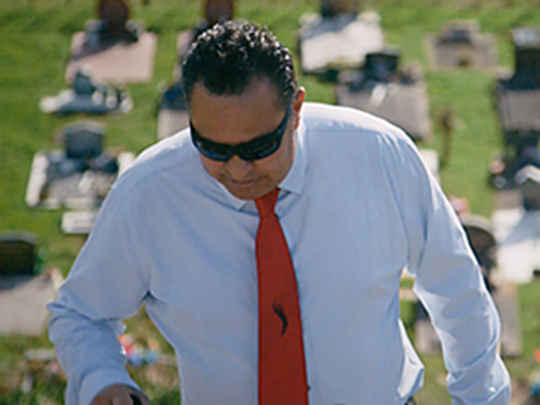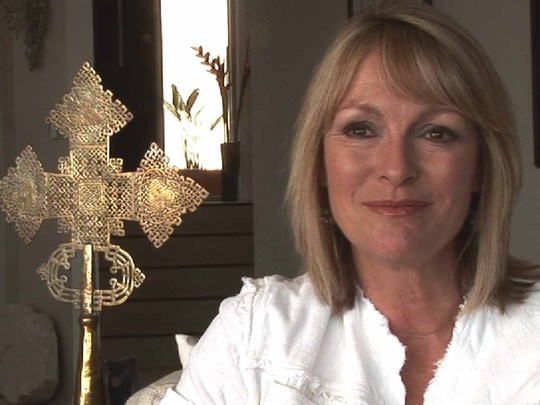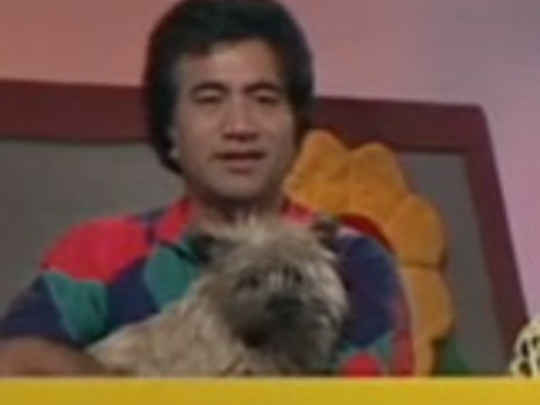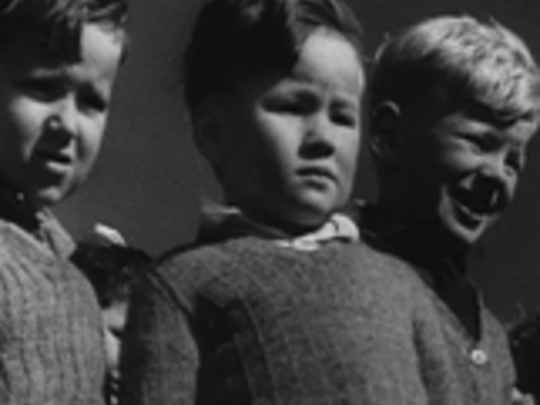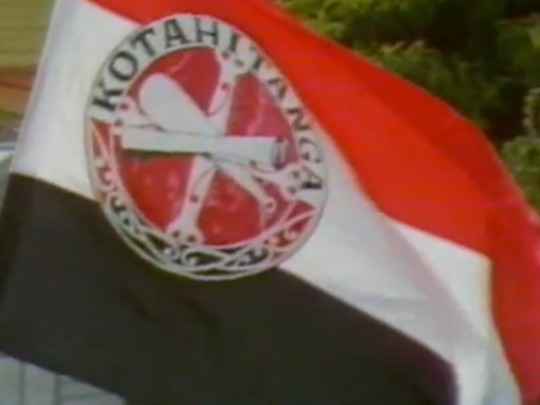Frontline - Kura Kaupapa
Television (Full Length) – 1994
gggg
Even under the most generous of circumstances, making a movie requires a massive leap of faith. Which makes Roger Donaldson's mounting of Sleeping Dogs in 1977 all the more impressive, as it was arguably the first “proper” all-New Zealand film designed for a wide audience. It no doubt required at least ten times the usual amount of faith-leaping.
There are plenty of notable antecedents by a wide range of pioneers, but Sleeping Dogs is the earliest example of what we recognise as a contemporary commercial film made by locals in New Zealand. The pure, ground-up gumption that drove Donaldson to get it done has served him well throughout a career as one of our most successful and prolific filmmakers, both here and overseas.
Arriving in New Zealand in the mid-60s, the Australian-born Donaldson was working as a photographer (TVNZ’s Breakfast covered a retrospective exhibition of his works in this report [Ian will add LINK]) when he set up production company Aardvark Films, through which he moved into directing commercials.
He channelled the profits from those commercials into documentaries like 1972’s Start Again (viewable in full here), which looks at city dwellers ditching the fast lane for a simpler life. It’s some pretty classic Kiwi hippie stuff, and definitely informs the "going bush" aspects of Sleeping Dogs.
Other TV documentaries Donaldson made in the early 70s include the thrilling The Adventure World of Sir Edmund Hillary - The Kaipo Wall (part two is here), which chronicled Hillary’s expedition to conquer the titular rock face in Fiordland. You can already sense Donaldon’s "get-it-done" qualities, and his clear talent for knowing how to get the best out of his footage.
He next moved into more scripted narrative, with early efforts like controversial 1974 TV drama Derek [Ian will add LINK]and the groundbreaking TV series Winners & Losers in 1976, an anthology drama with stand alone episodes adapted from New Zealand short stories. These projects proved a warm up for Donaldson and regular collaborator Ian Mune, who next moved forward with Sleeping Dogs, adapted from CK Stead’s novel Smith’s Dream.
Sleeping Dogs was one of the first New Zealand films to gain a release in the United States, Donaldson famously lured American actor Warren Oates (of The Wild Bunch and Bring Me The Head of Alfredo Garcia fame) down to play a supporting role on the promise of a fly-fishing holiday, knowing that Oates’ involvement would open the film up to wider distribution avenues. It’s an amusing, early example of Donaldson’s always-sharp commercial instincts marrying up with the creative problem-solving inherent to the best directors.
Made to support the film’s initial release, Dream in the Making - The Making of Sleeping Dogs, viewable in its entirety here, documents the shooting of the politically charged film, while this longer 2004 documentary sees Donaldson and his key collaborators gather to look back at the landmark film, and features plenty of classic Warren Oates stories.
Press footage from the Sleeping Dogs premiere (which you can see in this 1985 episode of arts show Kaleidoscope), saw Donaldson (accurately) staking nothing less than the continued existence of a New Zealand film industry on the success or failure of the film. It proved a lightning rod moment for Kiwi cinema, and its positive reception helped pave the way for further classics like Goodbye Pork Pie. But Dogs’ success didn’t mean it was any easier for Donaldson to mount a follow-up film.
In fact, as he explains in that same episode of Kaleidoscope, mounting a second feature was even harder than getting his first film made. But Donaldson kept busy in the intervening four years, directing a bizarre sci-fi one-off (?????) aimed at children called Nutcase in 1980.
He also directed an episode of rural Kiwi TV drama Jocko, which you can watch here. Once again, Donaldson’s Hollywood-friendly visual flourishes are evident — the opening shootout is straight out of a John Woo film (XXXXXXXX checking with Dominic).
Bruno Lawrence (CAN YOU add a link to bruno's page imogen) guest-starred in that Jocko episode, and the Kiwi acting icon would go on to play the lead in Donaldson’s eventual second feature Smash Palace, which debuted at the Cannes Film Festival in 1981 and got released the following year. The film’s trailer and an excerpt can be seen here, and a 2004 look back at the making of the movie is here. Donaldson also features in this 2000 doc about Lawrence, Numero Bruno.
Donaldson found time during this period to direct music videos, like this one for Monte Video and the Cassettes, famous for their prior novelty hit song 'Shoop Shoop Diddy Wop Cumma Cumma Wang Dang'. Monte Video frontman Murray Grindley also wrote the jingle for the famous Crunchie train robbery commercial. Donaldson himself directed the equally iconic “Any last requests?” Pixie Caramel ad.
Although it continued Donaldson’s interest in solitary men, Smash Palace was a quieter, more introspective film than Sleeping Dogs. It went down particularly well with critics in America, with no less an authority than Roger Ebert calling it one of 1982’s best films.
This got Hollywood to really pay attention to Donaldson, and when a meeting with legendary Italian producer Dino De Laurentiis about a Conan sequel went pear-shaped (De Laurentis, addressing Donaldson as “Donald”, called the script Donaldson had written with Ian Mune “a piece of shit”), Donaldson pitch himself as the director of De Laurentiis’ stalled remake of Mutiny on the Bounty - eventually titled simply The Bounty — replacing no less a luminary than David Lean in the director’s chair.
Donaldson leveraged the knowledge that De Laurentiis had already built the titular vessel at great expense for the abandoned Lean version of the film, and it was sitting unused in New Zealand. The complicated process of getting the boat up to Tahiti for shooting is chronicled in 1983 TV documentary In Bligh’s Wake.
The Bounty, starring Mel Gibson and Anthony Hopkins as Fletcher Christian and Captain Bligh, was by far Donaldson’s largest undertaking, and the pioneering spirit that informed his early work helped keep the gargantuan production…afloat. Donaldson was now in the big leagues.
He discusses the challenges of making the transition to larger scope filmmaking in the 1985 Kaleidoscope episode. He also has a large role to play in a notable Kaleidoscope episode from a couple of years later, which features an interesting survey of the previous ten years of Kiwi cinema with hilarious commentary from film critic Nicholas Reid — author of 1985 book A Decade of New Zealand Film – From Sleeping Dogs to Came a Hot Friday. Reid at one point celebrates the "hooning, rooting" fun offered by Ian Mune's Came a Hot Friday. (LINK)
Mune was once again Donaldson’s co-writer on the script for The Bounty, and the pair’s long creative partnership is covered in this 2007 TV documentary about Mune, The Life of Ian.
With The Bounty having established Donaldson’s ability to command an epic-scaled film, he was able to start getting more work in the States. His first purely American effort, the Sissy Spacek corruption drama Marie, didn’t make a huge splash, but his subsequent film No Way Out — a taut espionage starring Kevin Costner and Gene Hackman — was a big hit, solidifying Donaldson’s reputation as a helmer of elevated, polished commercial cinema.
Over the next 20 years, he directed multiple hit films (including Cocktail, Species and Dante’s Peak) plus another bonafide classic in the form of Cuban missile crisis drama Thirteen Days, which reunited him with Costner.
In the 1999 TV doco Coming Home, made while Donaldson was preparing to shoot Thirteen Days, he discusses his transition to Hollywood filmmaking, marvelling at going from working with a crew of 80 on Smash Palace to more than 3000 (XXXXXX check) on Dante’s Peak.
But Donaldson never left New Zealand behind, and he returned in 2004 to shoot The World’s Fastest Indian (a trailer, excerpt and a making-of for which can be viewed here) about singular Kiwi motorcycle nut Burt Munro, whom Donaldson had previously made a documentary about [LINK to offerings to the god of speed] in 1971. You can see Donaldson on the set of the film in this episode [LINK] of entertainment news show Headliners.
He followed Indian with the delightful British period gangster flick The Bank Job in 2007, before making Nicolas Cage vigilante drama Seeking Justice then spy thriller The November Man with Dante’s Peak star Pierce Brosnan. It speaks well to Donaldson’s directorial prowess that his stars (Hopkins, Costner, Brosnan) keep coming back to work with him.
Donaldson’s affection for fast vehicles reared its head again with 2017 documentary McLaren, which told the amazing story of Kiwi racing great Bruce McLaren.
And Donaldson’s not done yet, with various projects in various states of development.
Behind his historic contributions to our modern film industry, he stands tall as a living embodiment of the notion that a Kiwi director can have continued success overseas and not lose touch with his roots, both creatively and culturally.
- - Dominic Corry writes about film for The NZ Herald and Flicks, and is West Coast (of America) editor for website Letterboxd.
///////////////////////////////////////////////////////////////////
original of opening paras
Even under the most generous of circumstances, making a movie requires a massive leap of faith. Which makes Roger Donaldson’s mounting of Sleeping Dogs in 1977 all the more impressive, as it was the first feature film made by an all Kiwi crew in this country in more than a decade with, and arguably the first “proper” all-New Zealand film made here at all. It no doubt required at least ten times the usual amount of faith-leaping
There are plenty of notable antecedents, but Sleeping Dogs is the earliest example of what we recognise as a modern film made by locals in New Zealand, and the pure, ground-up gumption that drove Donaldson to get it done continued to serve him well throughout a career as one of our most successful and prolific filmmakers both here and overseas.
